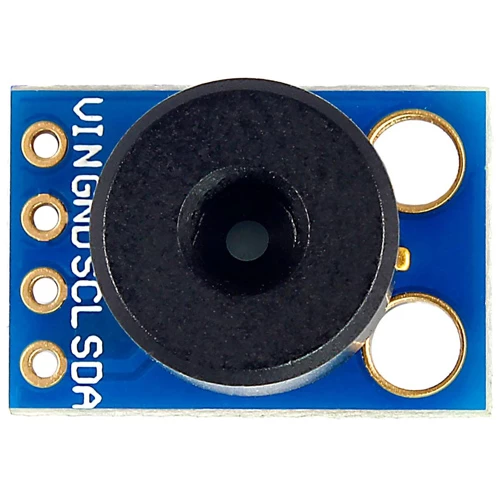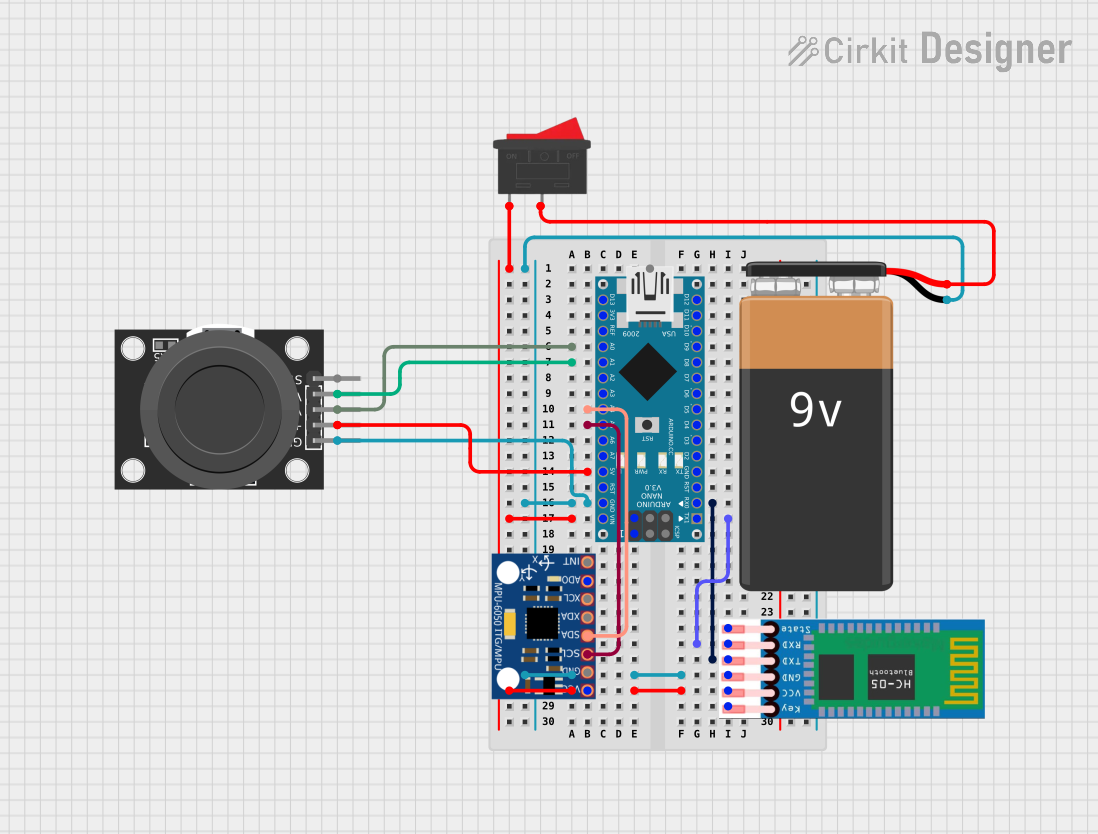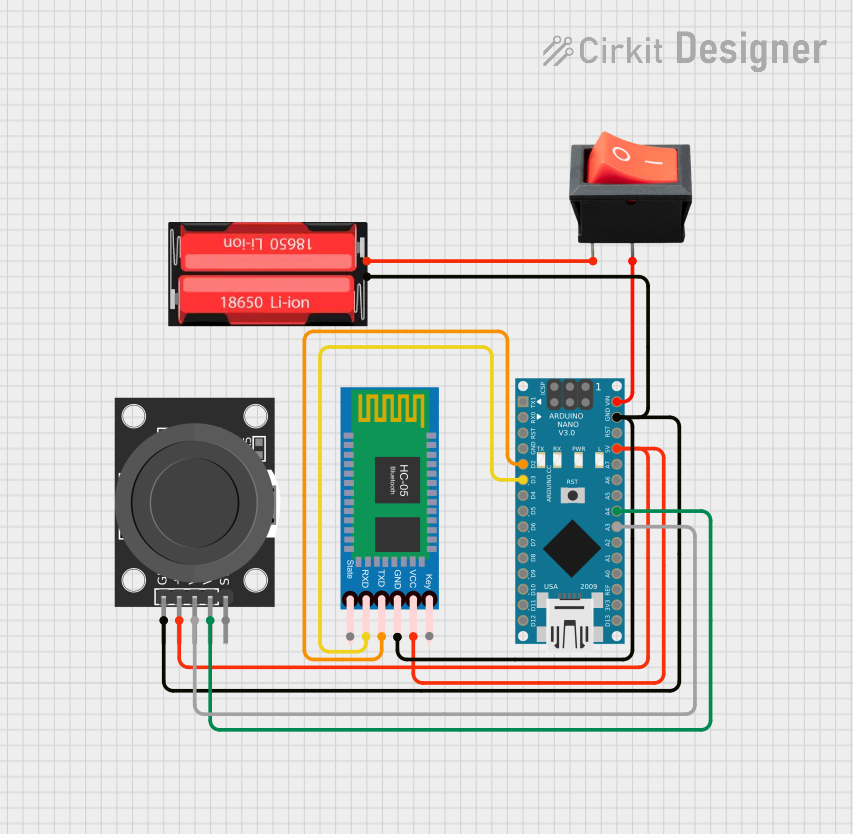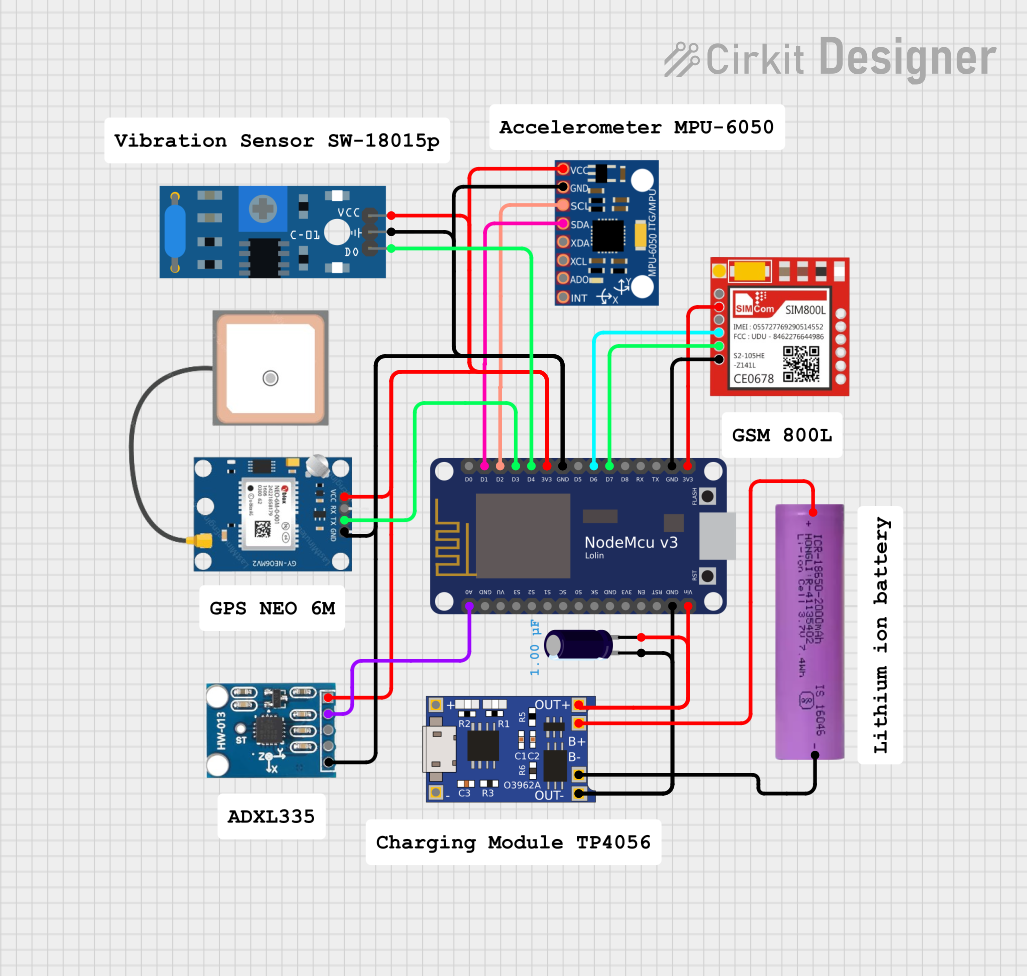
How to Use GY906: Examples, Pinouts, and Specs

 Design with GY906 in Cirkit Designer
Design with GY906 in Cirkit DesignerIntroduction
The GY906 is a digital temperature sensor module based on the MLX90614 infrared sensor. It is designed to measure the temperature of objects without requiring direct contact, utilizing infrared radiation. This makes it an excellent choice for non-invasive temperature measurement in a wide range of applications. The GY906 is widely used in medical devices, HVAC systems, robotics, and industrial automation, where accurate and reliable temperature readings are essential.
The module communicates using the I2C protocol, making it easy to integrate with microcontrollers such as the Arduino UNO. Its compact size and high precision make it a versatile and user-friendly component for temperature sensing projects.
Explore Projects Built with GY906

 Open Project in Cirkit Designer
Open Project in Cirkit Designer
 Open Project in Cirkit Designer
Open Project in Cirkit Designer
 Open Project in Cirkit Designer
Open Project in Cirkit Designer
 Open Project in Cirkit Designer
Open Project in Cirkit DesignerExplore Projects Built with GY906

 Open Project in Cirkit Designer
Open Project in Cirkit Designer
 Open Project in Cirkit Designer
Open Project in Cirkit Designer
 Open Project in Cirkit Designer
Open Project in Cirkit Designer
 Open Project in Cirkit Designer
Open Project in Cirkit DesignerTechnical Specifications
- Sensor Type: Infrared (IR) temperature sensor
- Model: MLX90614
- Operating Voltage: 3.3V to 5V
- Communication Protocol: I2C
- Temperature Range:
- Object Temperature: -70°C to +380°C
- Ambient Temperature: -40°C to +125°C
- Accuracy: ±0.5°C (typical, for object temperatures between 0°C and +50°C)
- Field of View (FOV): 35°
- Resolution: 0.02°C
- Current Consumption: 1.5mA (typical)
- Dimensions: 11mm x 22mm (approx.)
Pin Configuration and Descriptions
The GY906 module has four pins, as described in the table below:
| Pin Name | Description | Notes |
|---|---|---|
| VIN | Power supply input | Connect to 3.3V or 5V |
| GND | Ground | Connect to the ground of the circuit |
| SCL | Serial Clock Line (I2C) | Connect to the SCL pin of the microcontroller |
| SDA | Serial Data Line (I2C) | Connect to the SDA pin of the microcontroller |
Usage Instructions
How to Use the GY906 in a Circuit
- Power the Module: Connect the VIN pin to a 3.3V or 5V power source and the GND pin to the ground.
- Connect I2C Lines: Connect the SCL and SDA pins to the corresponding I2C pins on your microcontroller. For an Arduino UNO:
- SCL connects to A5.
- SDA connects to A4.
- Install Required Libraries: To use the GY906 with an Arduino, install the
Adafruit_MLX90614library from the Arduino Library Manager. - Write and Upload Code: Use the example code below to read temperature data from the sensor.
Example Code for Arduino UNO
#include <Wire.h>
#include <Adafruit_MLX90614.h>
// Create an instance of the MLX90614 sensor
Adafruit_MLX90614 mlx = Adafruit_MLX90614();
void setup() {
Serial.begin(9600); // Initialize serial communication at 9600 baud
Serial.println("GY906 Temperature Sensor Test");
if (!mlx.begin()) {
Serial.println("Error: Could not find a valid MLX90614 sensor!");
while (1); // Halt execution if sensor initialization fails
}
}
void loop() {
// Read object and ambient temperatures
double objectTemp = mlx.readObjectTempC();
double ambientTemp = mlx.readAmbientTempC();
// Print the temperatures to the Serial Monitor
Serial.print("Object Temperature: ");
Serial.print(objectTemp);
Serial.println(" °C");
Serial.print("Ambient Temperature: ");
Serial.print(ambientTemp);
Serial.println(" °C");
delay(1000); // Wait 1 second before the next reading
}
Important Considerations and Best Practices
- Ensure proper alignment of the sensor with the target object for accurate readings.
- Avoid placing the sensor in direct sunlight or near heat sources, as this may affect accuracy.
- Use pull-up resistors (typically 4.7kΩ) on the SDA and SCL lines if they are not already present on the module.
- Keep the sensor clean and free from dust or debris to maintain optimal performance.
Troubleshooting and FAQs
Common Issues and Solutions
No Data or Incorrect Readings:
- Ensure the wiring is correct and matches the pin configuration.
- Verify that the I2C address of the sensor matches the one used in the code (default is
0x5A). - Check for loose connections or damaged wires.
Sensor Not Detected:
- Confirm that the
Adafruit_MLX90614library is installed and included in the code. - Ensure the sensor is powered correctly (3.3V or 5V).
- Use an I2C scanner sketch to verify the sensor's address.
- Confirm that the
Inaccurate Temperature Readings:
- Ensure the sensor is not exposed to reflective surfaces or strong IR sources.
- Allow the sensor to stabilize for a few seconds after powering it on.
FAQs
Q: Can the GY906 measure the temperature of liquids?
A: Yes, the GY906 can measure the temperature of liquids as long as the liquid's surface is visible to the sensor and within its field of view.
Q: What is the maximum distance for accurate temperature measurement?
A: The effective distance depends on the size of the target object and its emissivity. For small objects, the sensor should be placed closer for accurate readings.
Q: Can I use the GY906 with a 3.3V microcontroller?
A: Yes, the GY906 is compatible with both 3.3V and 5V systems.
Q: How do I change the I2C address of the sensor?
A: Changing the I2C address requires reprogramming the sensor's EEPROM. Refer to the MLX90614 datasheet for detailed instructions.